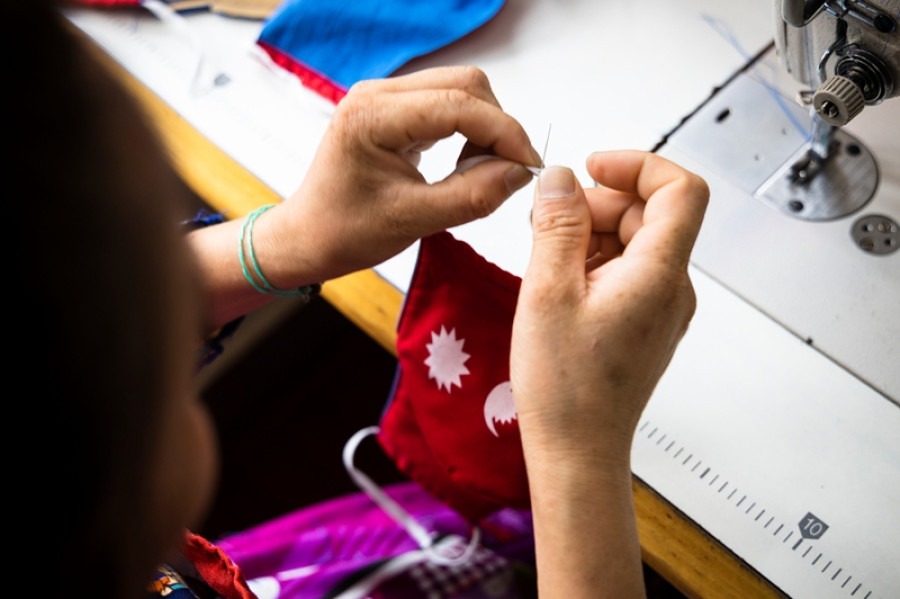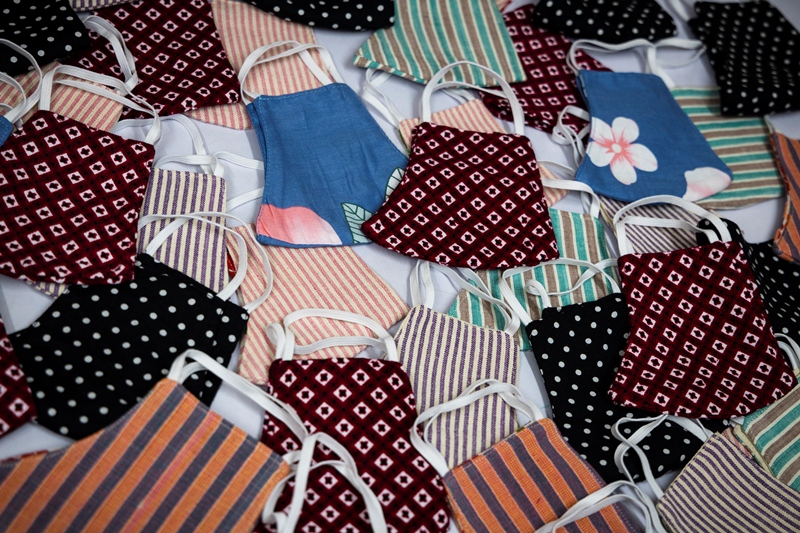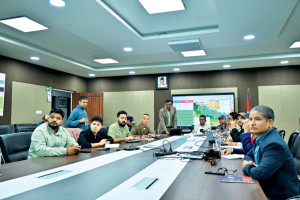Culture & Lifestyle
Reusable mask manufacturers thrive in the midst of the pandemic
As the pandemic caused demand for face masks to skyrocket, a few Kathmandu-based companies started making reusable masks—and the trend is picking up.
Tsering Ngodup Lama
In the beginning of March last year, at Kokroma’s factory in Jorpati, it was business as usual.
Workers were busy making infant and maternity clothing, which the brand is known for.
As March progressed, things started changing rapidly. Covid-19 was declared a pandemic, and face masks, which people in Kathmandu wore primarily to protect themselves from the city’s notorious air pollution, had found newfound importance—to protect from contracting the viral infection.
On March 24, when the government imposed a nationwide lockdown to curb the spread of Covid-19, Kokroma’s factory halted production and closed.
After closing operations for a week, Rewati Gurung, the founder of Kokroma, had made up her mind to start the production of children’s face masks, something the brand had never done before.
By mid-April, Kokroma was making hundreds of reusable masks for children every day, and in May, owing to huge demand, Kokroma expanded it’s masks line-up by manufacturing adult masks.
As demand for masks rocketed after the pandemic, sales of masks in the city’s pharmacies and retail outlets started flying off the shelf, even resulting in a shortage of masks. To cater to this huge demand, companies like Kokroma that once never manufactured masks have now repurposed their business and have started manufacturing reusable masks, and business, the companies say, is growing rapidly.
When Kokroma first started making masks back in April last year, the company made masks with only two layers.
“In June, WHO came up with guidelines for reusable masks and it stated that for a mask to be effective, it has to have three layers. And we have since been producing three-layer masks,” said Gurung. “Our masks are priced from Rs 100 to 250 per piece.”
Another company that started manufacturing masks very early on in the pandemic is Kolpa, a Nepali brand that makes personal accessories and home goods. By March, Kolpa’s founder had already set his sights on face mask production, something the brand had never done before.
“By last year’s March, it had already become known that wearing masks was one of the most effective ways to stop the virus from spreading,” said Rabi Chandra Malla. “Demand for masks were so high that pharmacies in the city were running out of masks and people were paying Rs 50 for a single disposable mask that otherwise cost only five rupees.”
Kolpa started manufacturing masks in March, and two weeks later Nepal went into lockdown.
“Even though there was a lot of interest from people for our masks, many hesitated to travel to our store to buy them over fears of contracting the virus, and when the lockdown started, things came to a grinding halt,” said Malla, whose masks are priced at Rs 225 per piece.
Even Kokroma, says Gurung, learned very early on that manufacturing masks is only a job half done.
“We were in the midst of a pandemic and mobility was severely restricted and this posed a huge problem to us in delivering our masks to clients,” said Gurung.

But despite the lockdown, says Gurung, there was no shortage of demand for her masks.
The earliest of Kokroma’s clients were mostly non-profit organisations and the company was also exporting its masks to countries like the US.
During the month-long lockdown, Malla used the time to do extensive research on masks to better his mask’s design to make them more comfortable and effective.
“When the lockdown was eased, we hit the ground running with production and there has been no looking back since,” said Malla. “Until now, we have made around 5,000 masks and except for a few hundred, we have sold them all.”
Demand for Kokroma’s masks, says Gurung, has remained consistently high.
“Earlier our clientele was mainly made up of non-profit organisations, but ever since the lockdowns were lifted, we have seen a surge in demand from for-profit organisations and individual orders,” said Gurung. “We have been receiving a lot of orders from banking and financial institutions, schools, colleges, restaurants for customised masks. A lot of companies are using masks as a branding tool and this has caused demand to surge.”
As masks started becoming an integral part of our wardrobes, it was only a matter of time, says Rehan Shrestha, a fashion blogger and digital content creator, that for some people masks became a tool of self-expression and style statement.
Last month, Shrestha, launched his own mask label Unmasked by Rehan, a luxury designer mask.
“The idea behind my mask label is to allow people to wear masks not only for their practical purpose but also as accessories that allow one to express themselves,” said Shrestha. “I launched the label with 40 different designs and each design is limited to just 15 pieces.”
The response, says Shrestha, has exceeded his expectations.
“We have already sold out five designs and some designs are also selling very fast. I have also tied up with an organisation that feeds people and for every mask we sell, we feed someone a meal and provide them with surgical masks,” said Shrestha, whose masks are priced from Rs 750 to 1,000. “Given the really good response, I have already started working on more designs.”
Both Gurung and Malla say that demand for their masks has vastly exceeded their expectations.
“A month ago, after making masks for months, we decided it’s time to refocus more on the production of infant and maternity clothing but the demand for masks is so high that we haven’t been able to. Masks still make up seventy percent of our total production and the remaining 30 percent is infant and maternity clothing,” said Gurung. “Such is the demand for masks.”




 19.12°C Kathmandu
19.12°C Kathmandu















